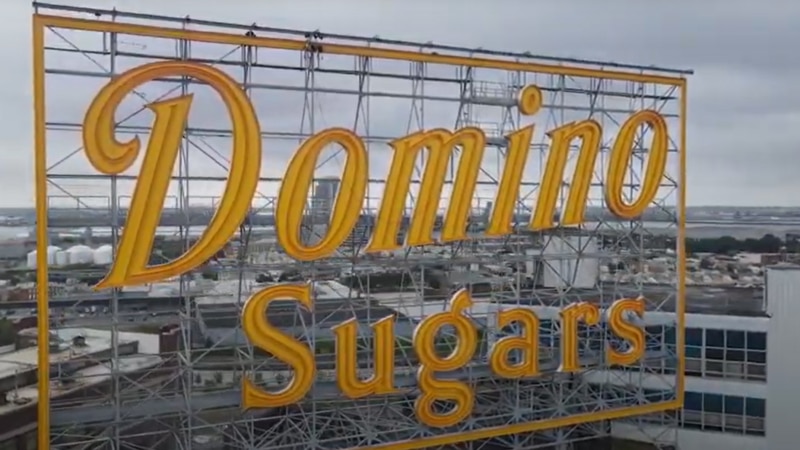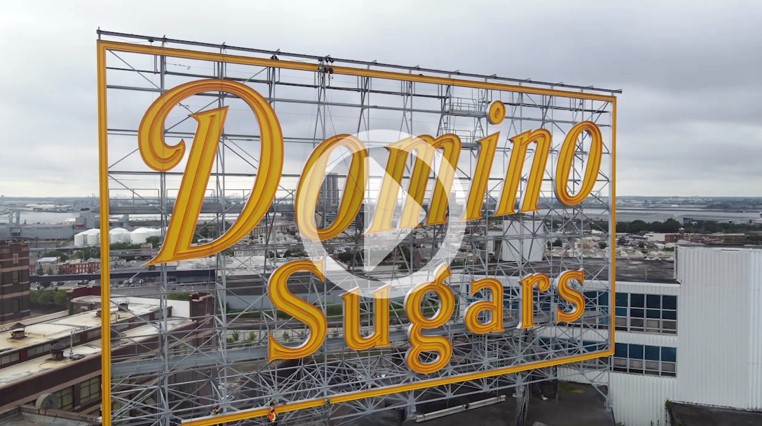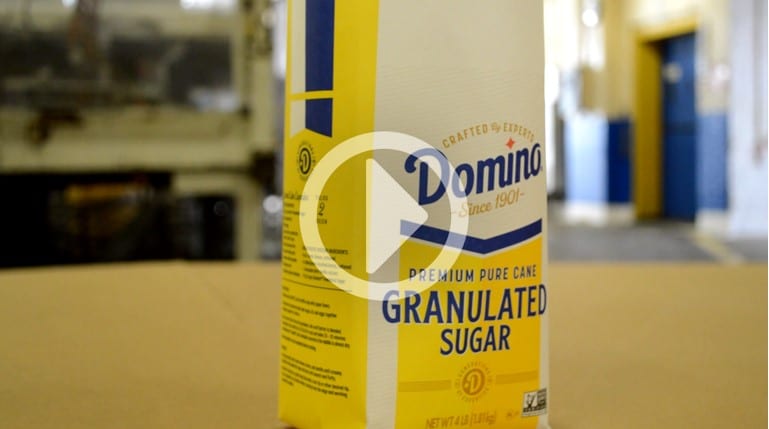Domino Sugar invests in a new sign and a new sugar bag as part of sustainability commitment
Domino Sugar recently made big changes to two of its most iconic fixtures as part of the company’s commitment to sustainability.
Domino’s iconic sign has been a beacon of pride and prosperity in Baltimore’s Inner Harbor for generations. But at 70 years old, the sign was showing its age. Its old neon bulbs were never fully lit, and it was getting harder to find people to replace them.
The company decided to upgrade the sign to LED lighting. After a few months of being down for only the second time in its history, the sign was back in a new, more sustainable way.
The new LED sign reduces energy use by 33,000 kilowatts a year and reduces more than 23 metric tons of carbon dioxide a year. Domino Sugar unveiled the new sign on the Fourth of July with fireworks and dignitaries.
“We had our longest employed personnel light the sign. Charlotte Hardy works in our lab, and has been here over 50 years, so it was an honor for her,” said Coricka White, Baltimore Refinery Manager.
And it was an honor for White.
“I was truly honored to be able to not only bring the sign back to Baltimore but to do it in a more sustainable and a more efficient way,” White said.
For generations the sturdy Domino Sugar bag has lined grocery store shelves promising to safely deliver home the sweetness inside.
To make the sugar bag more sustainable, the packaging team at Domino Sugar designed a 4-pound bag that uses one-ply paper instead of two-ply paper.
The new bag uses special paper that works with the company’s existing packaging machines. It turned out stronger than the old bag even with less paper. And the difference was unnoticeable to consumers.
“We really wanted it to be invisible to the end user,” said John Monroe, Director of Packaging Engineering. “And sometimes those are the best changes.”
The change is projected to save 600,000 pounds of paper annually or a 20 percent reduction in paper use.
“For us it really impacts the overall viability of the organization because you know we do have that agriculture component to it and if we’re not taking sustainable steps for the overall health of the planet we can’t survive as a business,” Monroe said. “We have to walk the walk and not just talk the talk when it comes to sustainability so it’s always something that is on the forefront of our mind.”
America’s sugar farmers and workers continue to build a brighter future by producing sugar, sustainably.
Get the Facts





